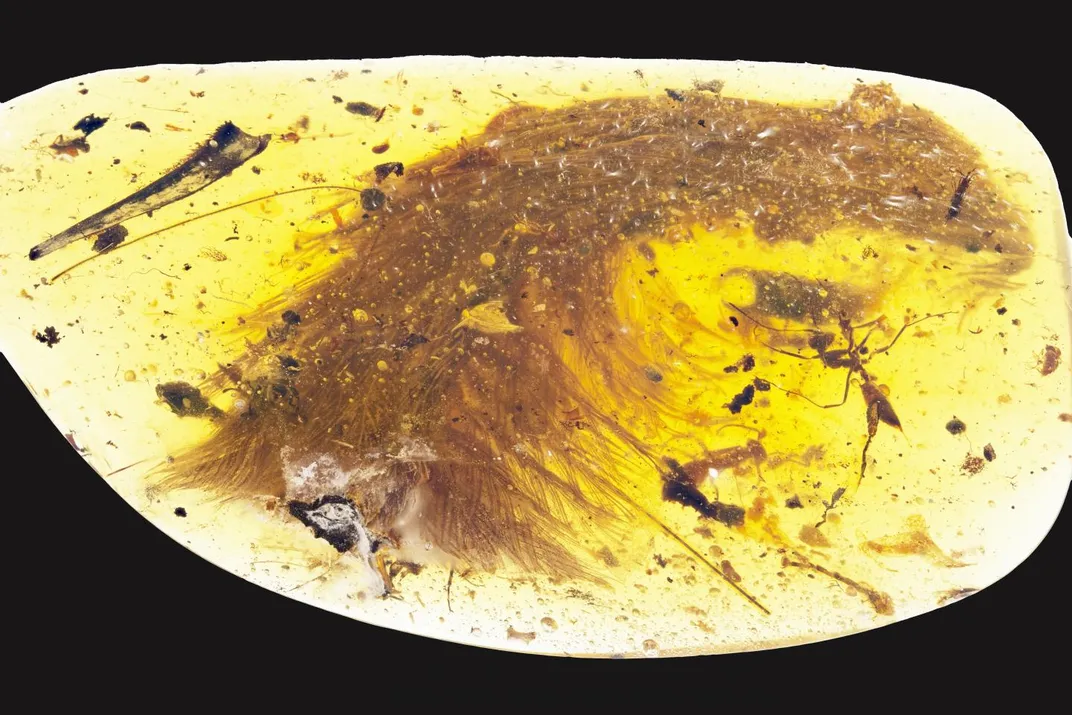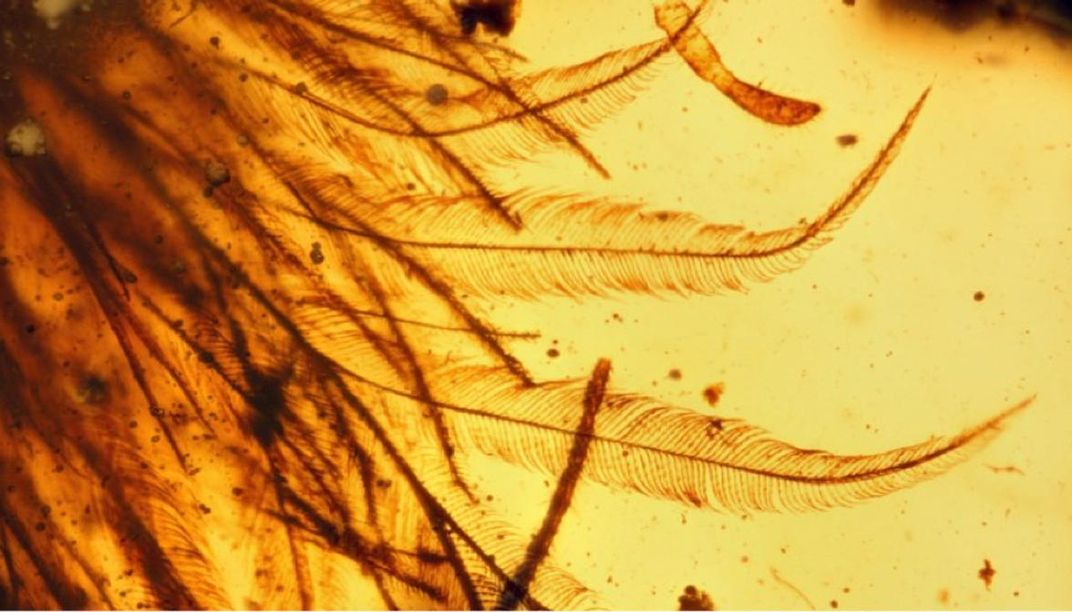A Feathered Dinosaur From 99 Million Years Ago
This bird-like creature raises questions about how smart dinosaurs really were.
:focal(912x315:913x316)/https://tf-cmsv2-smithsonianmag-media.s3.amazonaws.com/filer/2e/9a/2e9a93fd-f05e-4f79-9a8b-d08c8d34d1fd/dinosaur_-_feathers.jpeg)
Lida Xing at the China University of Geosciences and colleagues report an astonishing discovery in the latest issue of Current Biology: They have found a dinosaur tail preserved in amber that dates back to the mid-Cretaceous period—roughly 33 million years before the extinction of the dinosaurs.
What’s most amazing about the discovery is the amount of structural detail preserved in the tail, including bones, flesh, skin, feathers, and even ferrous iron from the creature’s blood. The dinosaur was a juvenile Coelurosaur, a species belonging to the same group of theropods to which the Velociraptor belongs. It must have become trapped in the resin, couldn’t get free, and died. The resin turned to amber, which the scientists found in Myanmar.

Another unique aspect of the discovery is the three-dimensional arrangement of the feathers, which can be clearly discerned. That’s often not the case when fossilization processes are at work. The tail’s whip-like nature is reminiscent of that of a mouse, but in regard to shape and color it’s very similar to what we observe in birds.

This study further underscores the close relationship between dinosaurs and birds, who are their direct descendants. One wonders again how evolved and intelligent these types of dinosaurs really were. The traditional view is that they were pretty dumb, based on their relatively small brains compared to their large body size. But that comparison really doesn’t work if the dinosaurs had a bird-like brain.
Birds have four to five times as many neurons per gram of brain as mammals do. We get a glimpse of the intelligence of larger birds like crows or parrots when they manipulate tools or crack open nuts with the help of cars. I recently observed one crow hitting the lever of a water dispenser while another crow drank from it. These birds are clearly smart, but need small brains in order to be light enough to fly. If dinosaurs had bird-like brains, some of the theropods would have been at least as smart as a rat or a wolf. But we’ll only know for sure if we find a dinosaur’s brain preserved in amber. Let’s hunt for it!
/https://tf-cmsv2-smithsonianmag-media.s3.amazonaws.com/accounts/headshot/Dirk-Schulze-Makuch-headshot.jpg)
/https://tf-cmsv2-smithsonianmag-media.s3.amazonaws.com/accounts/headshot/Dirk-Schulze-Makuch-headshot.jpg)